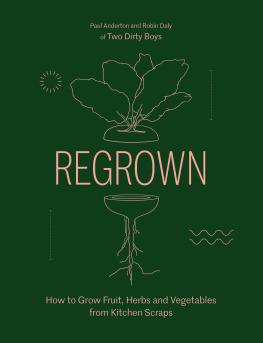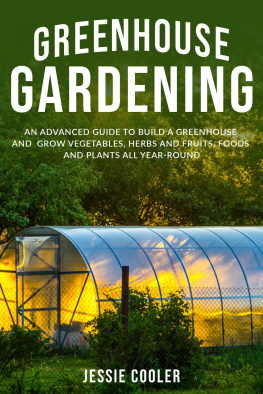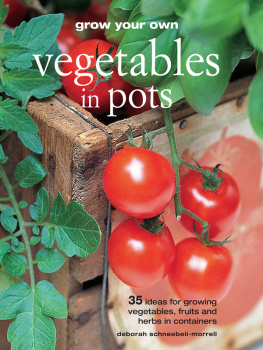

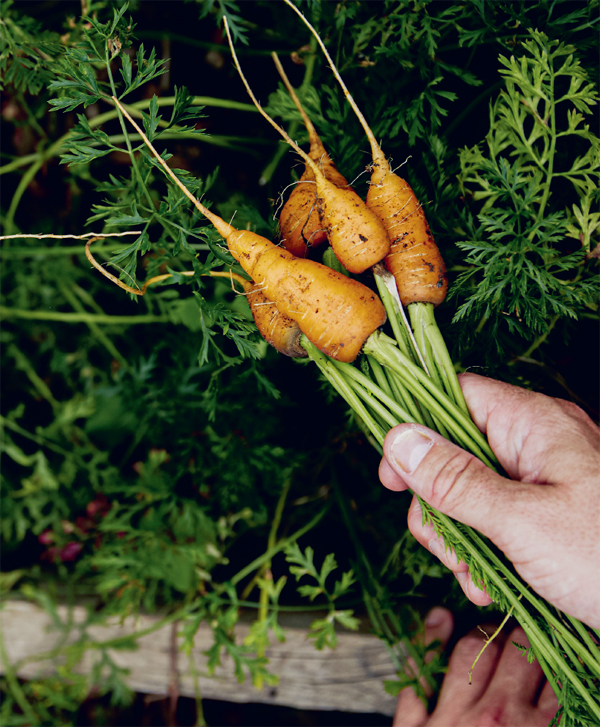
Contents
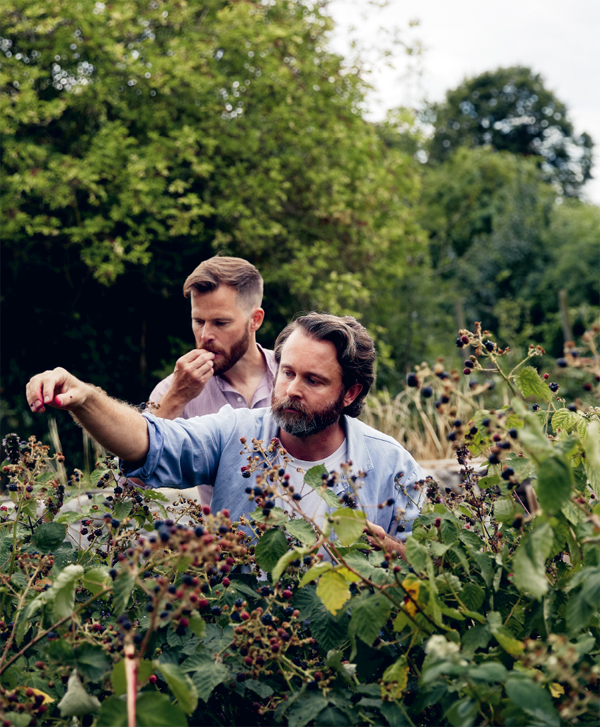
There are many magical things in life that are easy to take for granted, like a brilliant blue sky or the changing of the seasons. All you have to do is spend a moment contemplating these things and you are likely to feel a sense of awe and wonder.
Like something from a science fiction novel, plants have an extraordinary ability to reproduce themselves without fertilisation. Even your everyday kitchen scraps carry in their cells all the messaging they need to generate countless new versions of themselves. In its simplest form, a small living section of a scrap can be watered and nurtured into a fully revitalised version of its former self. We call this propagation, and its mind-bending.
This book will show you how to turn your kitchen waste into edible or ornamental new vegetables, fruits, herbs and plants. We will explain, with simple step-by-step instructions, how to breathe fresh life into your cuttings or germinate dormant fruit seeds which were bound for your waste bin.
There are so many reasons to try regrowing your own scraps. Here are just a few.
| Its energising and rewarding | Some cuttings visibly show new growth within hours. From that point onwards, youll see daily changes to your cuttings. Roots emerge, small green shoots come to life from nowhere and revived crops begin to take on new shapes. There are few things more rewarding than knowing youve played a part in something so awe-inspiring. |
| Its cost-effective | Regrowing scraps and cuttings can reward you with fresh homegrown food which can help reduce your grocery bill. If your shopping habits are anything like ours, you can be caught out when popping down to a local store to grab just a couple of key ingredients, only to return home with far more than you budgeted for. Having a supply of fresh produce growing on your windowsills might mean you wont have to make the trip in the first place you wont even need to put your shoes on to harvest the greens for a fresh summer salad. |
| They look great | The trend for houseplants has seen their monetary value increase in recent years, particularly in urban settings. Many of us have come to appreciate living amongst greenery, not just for the health benefits (including an increased oxygen supply and better sleeping habits), but also for the peaceful and tranquil aesthetic that a room full of plants creates. Growing vegetables in glass containers or in pots of your choice gives you an opportunity to fill your home with new life and positive energy. The winding new roots of an avocado seed in a glass of water have an eye-catching graphic quality when caught in a shaft of light on your windowsill, while the green shoots of root ginger resemble a miniature indoor bamboo plant. |
| Its good for the environment (and for you) | When you regrow from kitchen scraps, youre essentially recycling waste. By drawing extra life from your cuttings, youre helping to reduce carbon emissions by eliminating the need for producers somewhere else in the world to grow your lunch, package it and transport it to your supermarket. You could think of your journey into regrowing as a nod to self-sufficiency. But its worth noting that you probably wont be able to give up the supermarket quite yet, unless you have acres of windowsills in your home. |
| Its a great way to learn | If youre new to gardening or growing your own, the task ahead can feel like a minefield of dos and donts. A visit to a garden centre or plant nursery can be costly, and not everybody has the space to haphazardly learn by experience, as we have, in allotments (community gardens) or large gardens. So, regrowing your kitchen scraps is a wonderful way to learn and find inspiration in nature without a huge investment (both in time and money). As you progress, youll become more and more familiar with what different types of plants need and how to make adjustments to their environments to enhance growth and vitality. Once youve mastered regrowing at home, the skys the limit. |


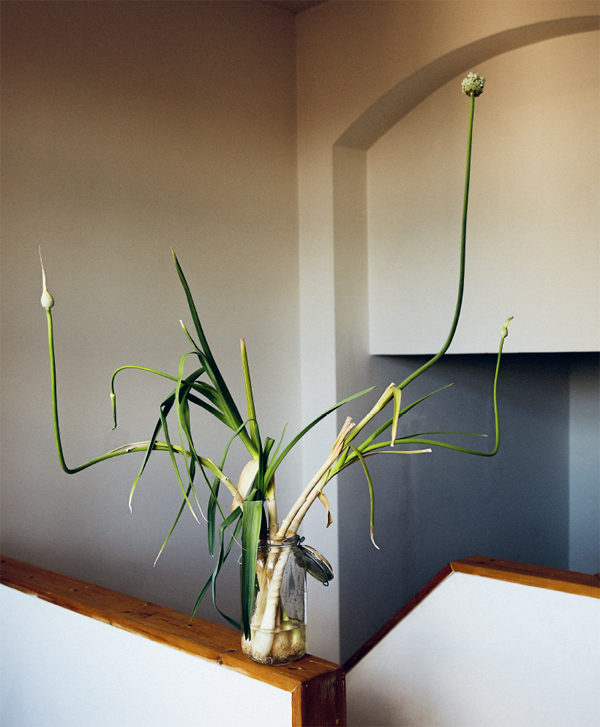
Flowering regrown leeks
| You | It might sound daunting if youre new to gardening, but the most important element if you are to grow things successfully at home is you. As you embark on your regrowing projects, you will learn to watch and listen carefully to your growing harvest. The plants behaviour and state of health will be clear to see. The cuttings themselves will warn you if their environment is too hot, too cold or too dry, or if they are in need of some fresh water. |
| Light | All plants need a different intensity of light and darkness depending on where in the world they originally come from and the conditions of their natural habitat. A bright window will provide enough light for most of the projects in this book; however, if you live in a particularly dark environment or youre planning to regrow over the darker months, you might choose to invest in an artificial grow light. |
| Temperature | Each plant has its own optimal temperature for growth. For each of the projects in this book, weve provided a guide to show whether the cutting prefers warmer or cooler conditions. Not everyone has the luxury of being able to alter the temperature of different zones in their home on command, so our notes on temperature are a general rule of thumb, but it would be wise to pick items to regrow based on the conditions available to you at home. |
| Soil | Although the majority of the projects outlined in this book start off growing in water, you will get the most out of these fruits and vegetables if you transplant them into soil as they mature. The soil contains the food your plants will need to grow strong. Its best to use a soilless mix if youre growing plants indoors. Some gardeners also choose to sterilise soil in advance to avoid bacterial or fungal infections later on in the growing process. It might sound crazy, but this can be done at home by cooking the soil on a baking tray in your oven for 30 minutes at 200C (180C fan/400F/gas 6). |
| Containers | Weve suggested a container type for each regrowing project, but these are just ideas. Personally, we get a kick out of reusing glass and plastic containers which were bound for the garbage or recycling bins. Depending on the required size and shape, you can use yogurt pots, jam jars, drinking glasses, ice cream tubs, ready-meal trays, plastic milk cartons and so on. In fact, anything you can lay your hands on will work, providing its a suitable shape and you can make drainage holes (if required) in the bottom. |

